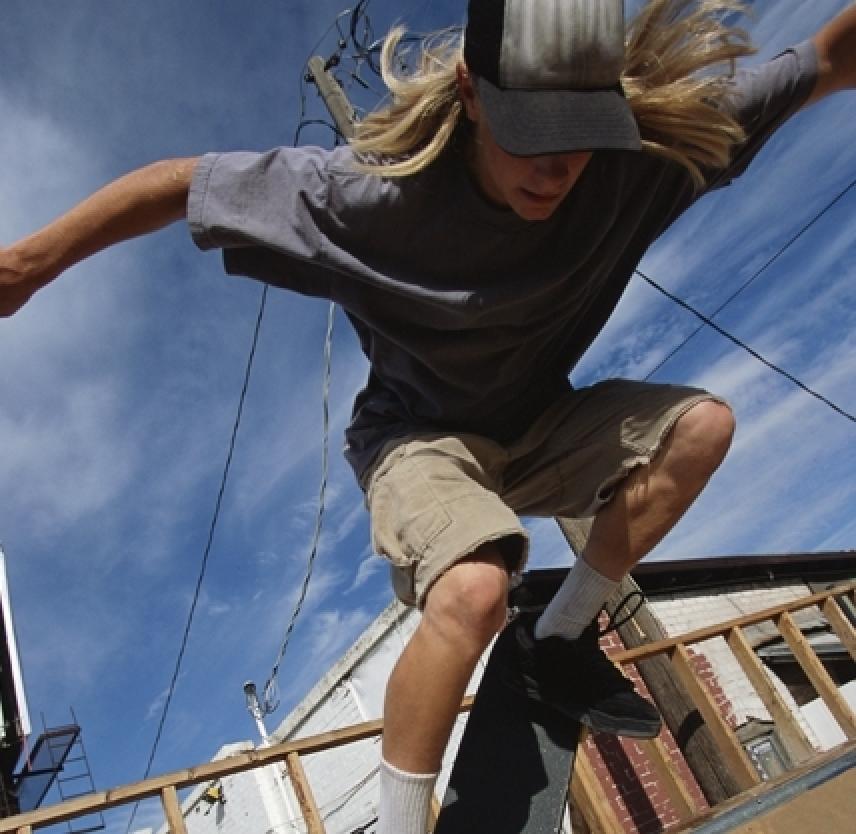
Death and Injury Statistics
For every injured in-line skater reported, about 1.1 skateboarders and 3.0 roller-skaters were injured. 3
Inline Skating:
- Head and face injuries account for 11,000 injuries each year. 4
- Over 100,000 inline injuries are incurred each year. 5
- Inline skating injuries can be prevented in 90% of circumstances. 6
- The likelihood of visiting the hospital is 1 in 25 every year if you participate in inline skating. 7
- 2/3 of skaters do not wear any safety equipment. 8
Skateboarding:
- In the year 2000, nearly 50,000 children ages 5 to 14 were treated in hospital emergency rooms for skateboard-related injuries. 9
- Six out of every 10 skateboard injuries are among children under 15 years of age.10
Scooters:
- In the year 2000, over 40,000 injuries required emergency room treatment. 11
- Head injury occurs in 27% of incidents involving scooters. 12
- 29% of injuries are fractures that occur most frequently in the arm or hand. 13
When and Where Injuries Are Most Likely to Occur
- One third of all new skaters live in the North Central states. 14
- 45% of inline skating incidents take place in the spring, while 28% take place in the summer. 15 • 39% of inline skating incidents happen on the weekend.16
- • About 50% of skateboarding injuries occur from hitting uneven surfaces. 17
- • 30% of scooter injuries take place on roadways and 20% on footpaths. 18
Who Is Most Likely to Incur This Type of Injury?
- The greatest number of injuries occur within the 0-14 age group. 19
- Because of their lack of ability, beginners are more likely to be injured from inline skating. 20
- Children younger than 15 accounted for 85% of scooter injuries. 21
- Males incurred approximately 75% of scooter injuries in the year 2000. 22
Prevention Tips
- Always wear protective gear:
- Wear a helmet that meets or exceeds the safety standards developed b SNELL, ANSI and/or the American Society for Testing and Materials (ASTM), elbow, wrist and kneepads.
- Wrist guards and other protective gear can prevent broken bones and other roller sports-related injuries.
- Skateboard helmets are different from bicycle helmets and should be purchased separately to provide adequate protection. 23
- When skateboarding, wear closed, slip-resistant shoes and specially designed padding.
- Stay on a surface that is smooth and free of debris.
- Don’t go at night.
- Obey traffic rules.
- Stay off the streets.
- Don’t hitch a ride from bicycles, cars or anything else.
- Be aware of those around you.
- Only one person should be on a skateboard or scooter.
- For skating, practice breaking and stopping before you begin.
- Begin skating with a slow five-minute warm-up.
- Skate on the right side, but pass on the left – yelling, “Passing on the left!”
- Check to make sure your skateboard is not damaged before each ride.
- Select a skateboard suitable for your level.
- Children under age 5 shouldn’t use a skateboard.
- If and when you fall while skateboarding, try to roll, rather than catch yourself with your arms, and if possible try to relax during the fall.
- Make sure the handlebars and the steering column on your scooter are secure before you ride.
- Avoid poorly constructed scooters.
- Children under age 12 shouldn’t ride motorized scooters.
Still Not Convinced?
Falling from as little as two feet can cause a traumatic brain injury. This means that skateboarders, skaters and those who ride scooters are at risk. Wearing the recommended safety gear and proper helmet is important. Wearing a helmet could prevent 85% of scooter and inline skating injuries. 24 Wheeled sports can be a great way to exercise and have fun, however the rules must be followed and safety equipment worn. When the rules aren’t followed, injuries can occur that will take the fun out of wheeled sports. Protect yourself and you will continue to have fun!
Sources
1, 9 www.safekids.org
2, 11, 21 http://orlando.nsc.org/articles/0901.htm
3, 14, 15, 16 http://www.aggressive.com/health/statistics.cfm
4 http://www.nsc.org/library/facts/inline.htm
5, 10, 19 http://www.aaos.org/wordhtml/press/kidsroll.htm
6 http://www.lifeessentialsbyzee.com/zee/safety/zLifeE_safety_sports_018.html
7 http://www.aaafoundation.org/resources/index.cfm
8, 17, 22, 23 http://www.vahealth.org/civp/bike/index.htm
12, 13, 24 http://www.intelihealth.com/IH/ihtIH/WSIHW000/20722/28209.html
18, 20 http://www.youthsafe.org/publications/2001junnews.htm
From the ThinkFirst National Injury Prevention Foundation.Used with permission. www.thinkfirst.org

Comments (1)
Please remember, we are not able to give medical or legal advice. If you have medical concerns, please consult your doctor. All posted comments are the views and opinions of the poster only.
Anonymous replied on Permalink